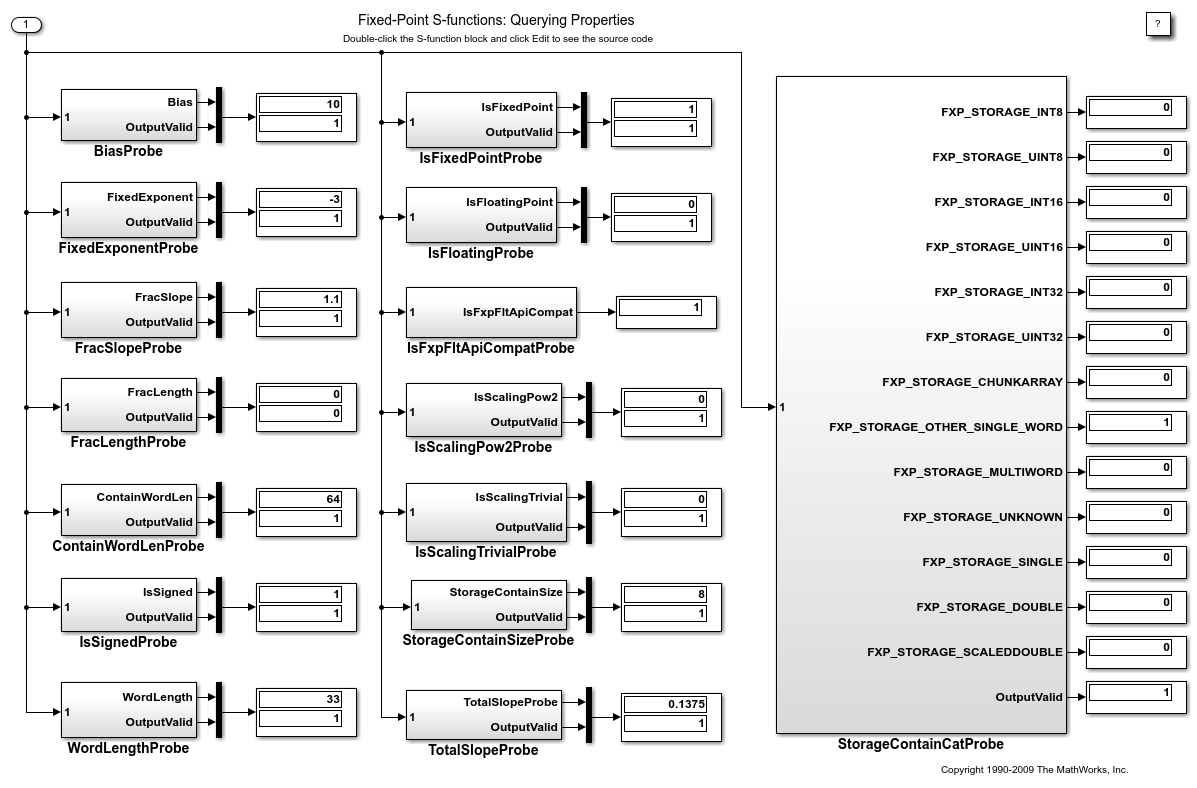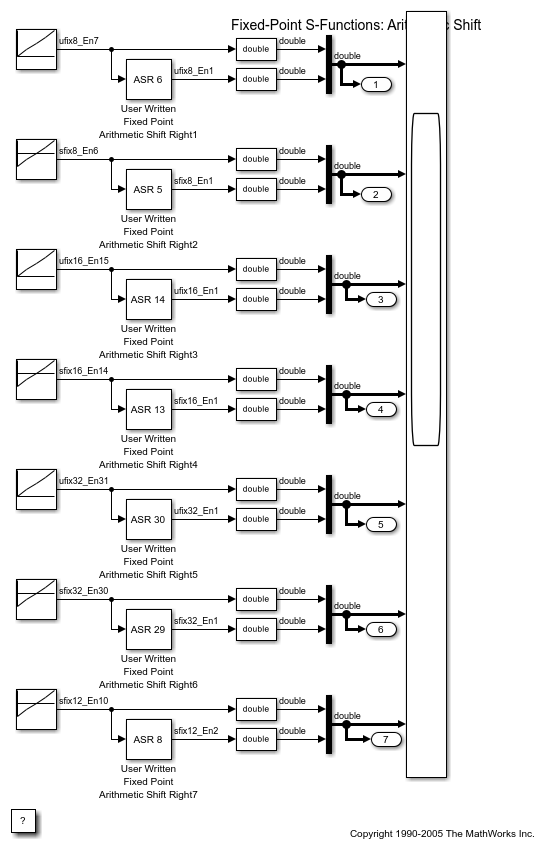외부 코드 통합하기
사용자 지정 고정소수점 S-Function을 사용하여 외부 코드를 통합할 수 있습니다.
함수
도움말 항목
- Data Type Support
Lists the data types supported by the API and discusses the treatment of integers and data-type-overridden signals.
- Structure of the S-Function
Displays the basic structure of an S-function that directly handles fixed-point data types.
- Storage Containers
Discusses the containers used to hold signals in simulation and code generation.
- Data Type IDs
Describes the creation, assignment, and usage of data type IDs, including how to get and set information about data types in an S-function.
- Overflow Handling and Rounding Methods
Discusses the tokens you can use to define overflow handling and rounding methods in your fixed-point S-function, and describes the overflow logging structure.
- MEX 파일 만들기
고정소수점 S-Function의 MEX 파일을 만들기 위해 거쳐야 하는 추가 단계를 설명합니다.
- Get the Input Port Data Type
Within your S-function, you might need to know the data types of different ports, run-time parameters, and DWorks.
- Set the Output Port Data Type
You may want to set the data type of various ports, run-time parameters, or DWorks in your S-function.
- Interpret an Input Value
Suppose you need to get the value of the signal on your input port to use in your S-function.
- Write an Output Value
Suppose you need to write the value of the output signal to the output port in your S-function.
- Determine Output Type Using the Input Type
Using the data type of the input to your S-function to calculate the output data type.




